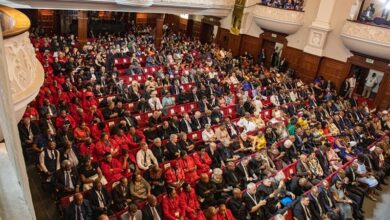
Over the past few years, India has witnessed a significant escalation in its response to Chinese infrastructure activities along the Line of Actual Control (LAC) and the McMahon Line in the Northeast. This heightened reaction is particularly evident since the Galwan Valley clash in eastern Ladakh in June 2020, which served as a turning point in the India-China border dispute. Despite multiple rounds of military and diplomatic negotiations, several friction points along the LAC remain unresolved, maintaining a precarious situation. In response, India has intensified its efforts to bolster its infrastructure near the border, with the goal of enhancing its military capabilities and ensuring the deterrence of the People’s Liberation Army (PLA).
In alignment with its continued commitment to fortifying border infrastructure, India’s Defence Minister, Rajnath Singh, made a significant move on September 12, when he inaugurated 90 infrastructure projects undertaken by the Border Roads Organisation (BRO). These projects, valued at over Rs 2,900 crore, spanned 11 states and Union territories, reflecting a comprehensive effort to strengthen India’s borders and improve connectivity in remote regions.
The projects inaugurated by Rajnath Singh covered a wide range of infrastructure improvements, including the construction of blacktop roads, bridges, tunnels, and airfields. Notable projects include the Nechiphu tunnel in Arunachal Pradesh, the development of two airfields in West Bengal, the construction of two helipads, and the establishment of 22 roads and 63 bridges. These projects were strategically distributed across various regions: 36 in Arunachal Pradesh, 26 in Ladakh, 11 in Jammu and Kashmir, five in Mizoram, three in Himachal Pradesh, and two each in Sikkim, Uttarakhand, and West Bengal. Additionally, one project was dedicated to Nagaland, Rajasthan, and the Andaman and Nicobar Islands, respectively.
Rajnath Singh commended the BRO for its exceptional work in completing these strategically vital projects in record time. He aptly referred to the organisation as the “bro” of the armed forces, highlighting the symbiotic relationship between them. Singh emphasized that these infrastructure initiatives not only safeguard India’s borders but also play a pivotal role in the socio-economic development of remote and underserved areas.
The Defence Minister expressed optimism regarding the BRO’s upcoming project, the Shinku La Tunnel, which is poised to become the world’s highest tunnel, located at an astonishing altitude of 15,855 feet. Once completed, this tunnel will link Lahaul-Spiti in Himachal Pradesh to the Zaskar Valley in Ladakh, providing all-weather connectivity between the two regions. Singh stressed that infrastructure development in border areas serves not only national security but also promotes connectivity with neighboring countries that cooperate with India. He also noted that the BRO has been involved in constructing infrastructure projects in several countries, including Myanmar and Bhutan, fostering peace and cooperation in the region.
With the inauguration of these 90 projects, the BRO has now completed a total of 295 infrastructure projects since 2021, with an estimated cost of approximately Rs 8,000 crore. This remarkable accomplishment reflects India’s commitment to enhancing its border infrastructure. In 2022, 103 projects worth approximately Rs 2,900 crore were inaugurated, and in 2021, 102 projects at a cost of over Rs 2,200 crore were dedicated to the nation.
Among the noteworthy infrastructure projects initiated by Rajnath Singh, a few deserve special attention:
1. Devak Bridge: Situated on the Bishnah-Kaulpur-Phulpur road near the India-Pakistan border, the 422.9-meter-long, Class 70 RCC Devak bridge holds strategic importance. It will significantly enhance the operational preparedness of the armed forces while boosting the socio-economic development of the region.
2. Nechiphu Tunnel: Located on the Balipara-Charduar-Tawang road in Arunachal Pradesh, the 500-meter-long Nechiphu Tunnel, coupled with the under-construction Sela Tunnel, will provide all-weather connectivity to the strategically vital Tawang region.
3. Bagdogra and Barrackpore Airfields: The revamped Bagdogra and Barrackpore Airfields in West Bengal, reconstructed at a cost exceeding Rs 500 crore, will not only strengthen the Indian Air Force’s preparedness but also facilitate commercial flight operations in the region.
4. Nyoma Airfield: Rajnath Singh laid the foundation stone for the Nyoma Airfield in eastern Ladakh, a project expected to cost Rs 200 crore. This airfield will significantly enhance air infrastructure in Ladakh and augment the Indian Air Force’s capability along the northern borders, becoming one of the world’s highest airfields and a game-changer for the armed forces.
News Mania Desk / Agnibeena Ghosh 18th September 2023






